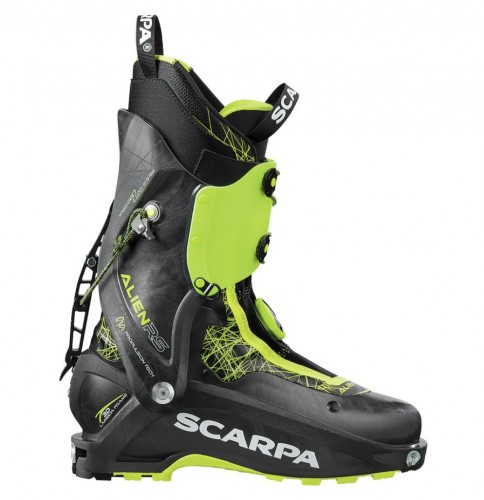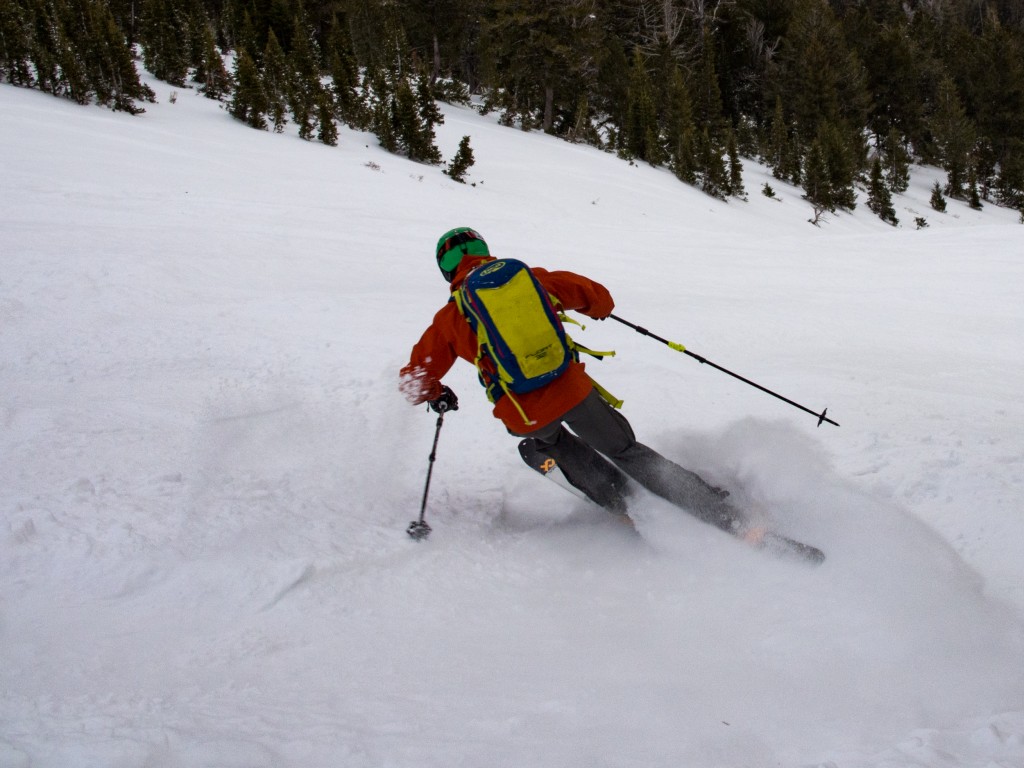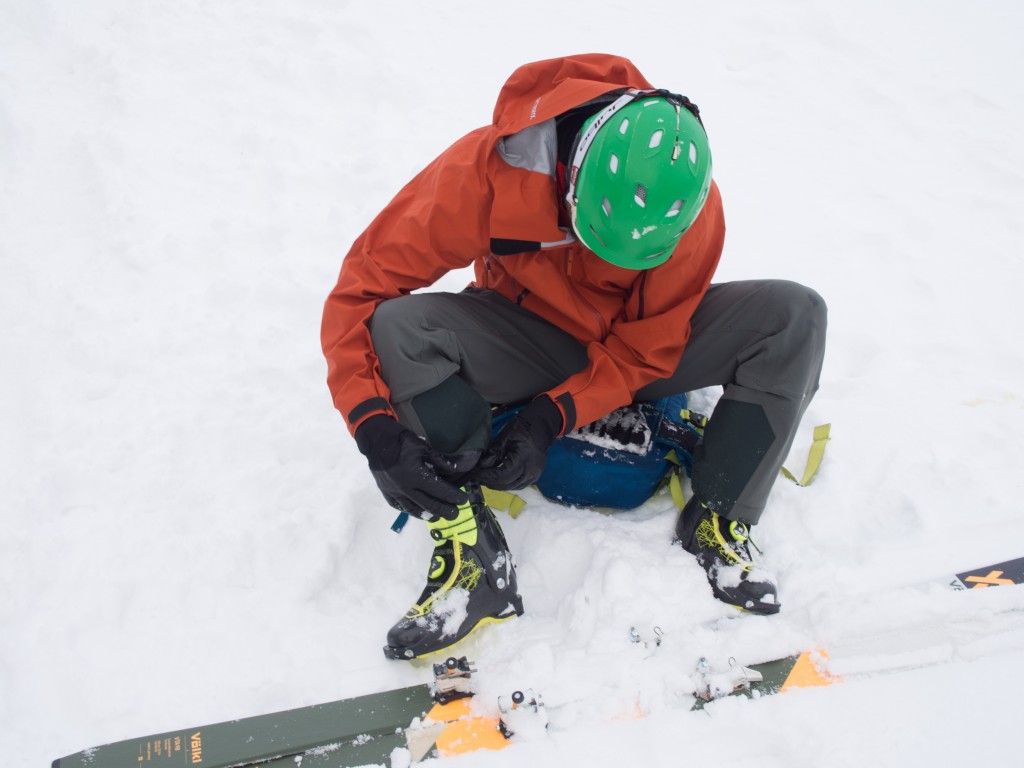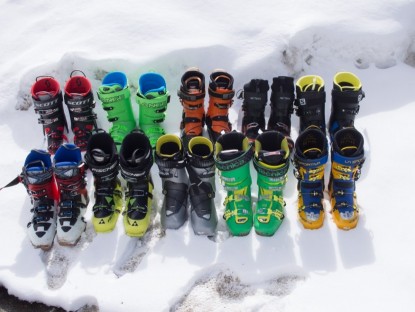Scarpa Alien RS Review
Our Verdict
Our Analysis and Test Results
The Alien RS is a skimo race boot that can be used every day, or it is an everyday ski boot that can be used at skimo race pace. This “blurring of the lines” will tickle some's fancy, for sure. For high-tempo ski touring and ski mountaineering, the Alien RS is unparalleled. Aficionados of this type of skiing are increasing in number and passion. Their gear is only now keeping pace. The Alien RS is the expression of this community's desires.
Performance Comparison
Uphill Performance
The range of motion is spectacular. The friction within that range of motion is virtually zero. In automobile design, people talk about technology “trickling down” from the race industry. That is exactly what has happened with the Scarpa Alien RS. This boot tours better than the skimo race boots of five years ago. Current race boots, of course, are even less inhibited than the Alien, but not by much.
Basically no other boot in our test goes uphill as well as the Alien RS. A couple come close, but do not match.
Weight
The Alien RS is in the lightest boot category we tested, by a few ounces. These are just a little over half the weight of the heaviest boots in our test. This is a wide weight spread. Weight on your feet is significantly correlated with uphill energy expenditure. Unlike skis themselves, the weight of your ski boots is not a performance attribute. Light boots have less material to work with, which indirectly affects performance. However, light boots do not inherently inhibit downhill performance.
We like light boots for all-day efforts, extensive booting, and technical climbing while ski mountaineering. The Alien RS excels for all of those things. If weight is not as big a concern for you, you have numerous other options in our test.
Downhill Performance
Uphill performance and weight are diametrically opposed to downhill performance. Making boots excel on the up, by stripping away materials and using more carbon fiber and reducing friction at the cuff, inherently compromises downhill performance. The Alien RS scores near the bottom of our charts in downhill performance. To use these, a skier will have to have excellent downhill fundamental ski technique. With that excellent technique, though, making lightweight boots work is an excellent challenge and exercise. It is less forgiving of sloppiness, so certain aspects of downhill technique are refined by lightweight boots. For high-speed, big skis (in length and width), we hesitate to give hard and fast boot recommendations. Our test team used the Alien RS, and has used similar boots, on skis well over 100mm underfoot. With super serious skiing the Alien RS is limited in performance. There may even be safety concerns with using something like the RS in more high energy downhill skiing.
Most of the boots we tested ski downhill better than the Scarpa Alien. With all ski boots, fit is king. Downhill ski performance of your touring boots, especially these super-light touring boots, is closely correlated with fit. Fit them super close, and you get much better performance. This close fit, though, is less comfortable on the uphill and less insulating. Stiffer boots give more latitude for a looser fit, while at least closely simulating the maximum downhill performance. Take, for instance, the beefiest boots in our test. The four-buckle, overlap behemoths can fit comfortably while skiing downhill at a high level. The overlap construction and thick plastic of these beefier boots make for a package that is stiff in all the right directions, with a progressive forward flex for both old and new school ski technique. The Alien RS is quite stiff in many directions, but its forward flex is not very "progressive"; press your shins to the front of the Alien RS and you hit a firm wall.
Comfort and Fit
First, the Alien RS fits rather wide. If you have high volume feet, there is room in there for you. The stock Intuition brand liner leads the business, with stiff foam. This version of the Intuition liner is thin, with a cuff articulation zone that works with the shell cuff flex to maximize range of motion. The great cuff articulation range helps uphill performance and helps with comfort too. You can drive your stick shift using these boots.
The Alien is in a high volume fit category alongside other Scarpa offerings. Our average-foot-volumed lead test editor found the Alien RS fit to be too roomy in stock configuration. Downsizing made them too short in the toe box. An aftermarket Intuition liner takes up some space, adds insulation, and increases downhill performance with only a slight touring performance and weight penalty.
Warmth
As alluded to above, warmth is something that suffers from light weight. These are not very insulating boots. Both the liner and shell are very thin. Our lead test editor, Jed Porter, cannot safely wear these for low-paced guiding and avalanche course instruction in the colder days in the Tetons. As long as the air temperatures are moderate or the pace (and subsequent body-heat output) is elevated, the Alien RS is appropriate. For high-altitude and multi-day ski expeditions, extra measures need to be taken.
There is little margin for error in the insulation of the Alien RS. Backcountry skiing is a vulnerable activity and our feet are especially sensitive. Going with minimal insulation on our feet is a bold move. Make sure that your decision-making with boots takes this into account. We are cautious to have some backup plan with the Alien RS. Electric insoles, overboots, dry socks, and short “bail out” exit routes are key to keeping your toes when you ski in light, minimally insulated boots. The thicker liners of others lend a great deal more warmth than the thin liners of the Alien.
Ease of Use
When they work well, the Alien RS boots do work well. They open wide for getting your foot in and out, the “Boa” forefoot tension system is brilliant, and the upper cuff buckle essentially replaces up to four different moves with one snap. To keep the weight light, the entire upper cuff closes with a lever actuating strings. But these strings can break — one tester has had multiple strings break. All our testers had the cam-lock clasp that tensions the string slip. These two issues are related: the string slipping through the cam-lock abrades the string and weakens it. Our test team finally remedied the situation with a knot tied behind the cam-lock to eliminate slippage. With time, the string will wear out in other locations as well.
Ease of use is something both compromised and enhanced by the lightweight design of the Alien RS. The systems all work very well, as long as they stay intact. However, if any part of the string fails, you must replace the string before you can ski. If the Boa closure fails, the boot will perform very poorly, if at all. Heavier boots with more buckles and more robust materials do not suffer these same problems. Compare them to the “four buckle” boots, which have four buckles, plus a Velcro strap and separate ski/walk mode lever. These are more like a six-part security system. The Alien RS is truly just two parts.
Value
You don't purchase boots like this for the value. But, when compared to race class boots, the Alien RS is quite a steal. It approximates their performance, adds some benefits, and costs half what the big dogs do. As compared to “regular” ski touring boots, the Alien RS is right in the mix, price wise.
Conclusion
This is an easy Top Pick award winner. It is purpose built for a narrow niche and executes within that niche very well. For fast-paced ski touring and ski mountaineering, the Alien RS stays out of your way when you need it to, and supports just enough. For a specialized product, the Alien RS scores surprisingly well. With super high marks in weight and uphill performance, the overall score holds up pretty well against significant compromises in downhill performance and warmth.









